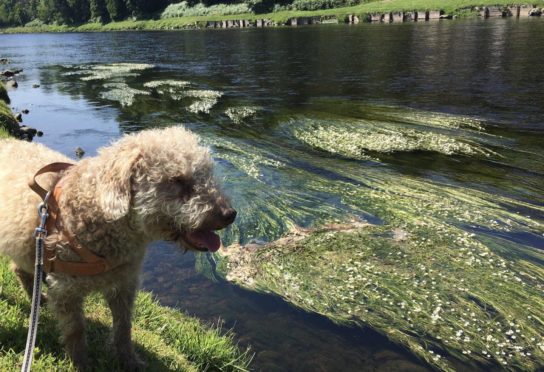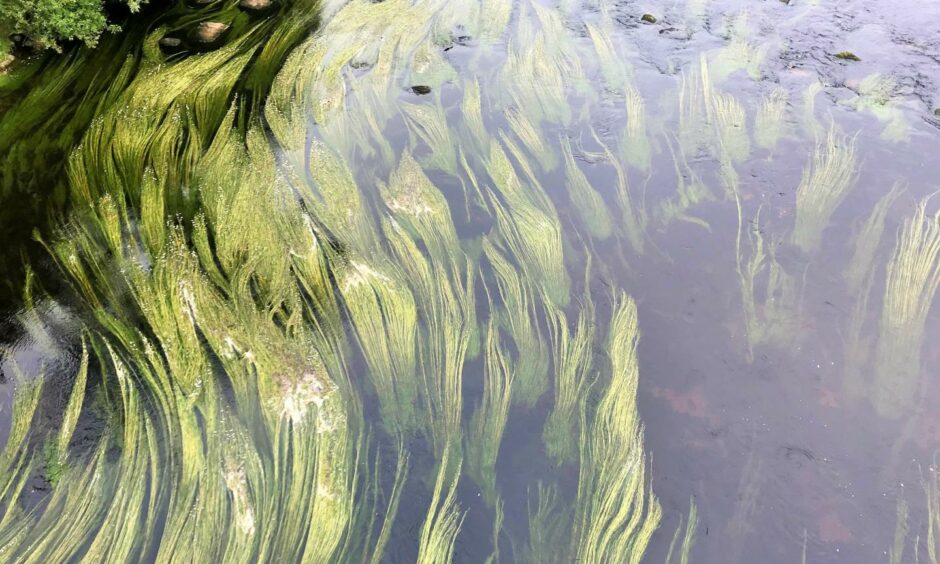Just below the surface of the Spey lives an invasive species slowly choking the river and many of its inhabitants: Water crowfoot.
Vast beds of these long fluttering weeds swirl across the surface of the water, pinned to the riverbed with long, thick roots.
Native to the chalk rivers of southern England, water crowfoot (ranunculus aquatilis) is an unwelcome fugitive in the Spey.
Why is water crowfoot causing problems?
Its presence smothers out freshwater pearl mussels – an endangered mollusc already on the brink of extinction in Scotland.
“Effectively they are choked and then entirely suffocated by it,” said Roger Knight, director of the Spey Fishery Board.
He explains that the River Spey is protected under European legislation as a Special Area of Conservation (SAC) in recognition of its importance for four threatened wildlife species; Atlantic salmon, otters, sea lamprey and freshwater pearl mussels.
“In recent years monitoring has shown that freshwater pearl mussel populations have gone through quite a significant decline within the River Spey,” he said.
“The Spey used to hold one of Europe’s most significant populations of pearl mussels, and I’m not suggesting for a moment that this decline is entirely because of ranunculus, but it certainly hasn’t helped.”
The long winding weeds also cause problems for anglers, who find that the green mass makes it difficult to hook and land salmon correctly.
How to get rid of water crowfoot
Low river levels and warm weather send the water crowfoot into overdrive.
But normal weeding tactics like pulling growths of the ground and spraying them liberally with weed killer have proven difficult.
“Ranunculus develop strong roots which have to be hand-pulled,” said Roger, “its very labour intensive, plus the Spey is the fastest flowing river in Scotland which presents a bit of a health and safety problem.
“We used to be able to control it by applying Midstream (an aquatic herbicide) which looked like a long piece of string and would wrap itself around the roots.”
It was very effective but had an adverse effect on other plants in the river and so 20 years ago its use was outlawed by the European Commission.
No other chemical approved for use in rivers has managed to make a dent.
Battling this weed alone
Meanwhile experiments cutting the plant just allowed small strands to take root down river no matter how careful they were, Roger said.
“We made a formal complaint to the secretary-general at the European Commission regarding the government’s failure to take effective action to control this, but sadly that complaint was rejected,” Roger said.
“So we are left with the situation we are in now.”
It is now down to owners of stretches of the Spey to deal with the issue themselves, while others like Roger continue to push the Scottish Government to take action.
In the meantime, the river continues to become ever more choked by this invasive weed.


